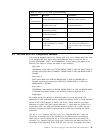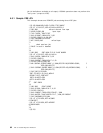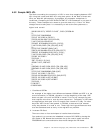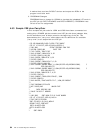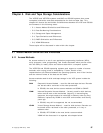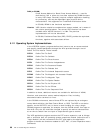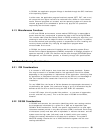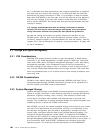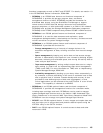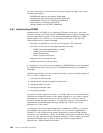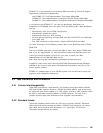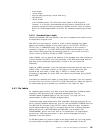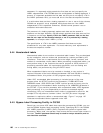
In OS/390, the application program linkage is handled through the SVC interfaces
of the operating system.
In either case, the application program functional request (GET, PUT, and so on)
will cause the next logical record to be retrieved from a buffer or from external
media. Channel programs are created, and the operating system will cause the
channel programs to be scheduled to perform any physical I/O operations
required by the functional request.
5.1.3 Miscellaneous Functions
In VSE and OS/390 environments, access method OPEN logic is responsible to
ensure that the user is authorized to access the data in the file being OPENed.
This includes label (Data Set Control Block or DSCB) checking for input files, and
checking to ensure that the output file does not overlay existing files. In addition,
the access method (and operating system) is responsible for error handling and
recovery where possible only notifying the application program when
unrecoverable errors occur.
In OS/390, the access method will interface with the operating system Direct
Access Device Space Management (DADSM) component to manage allocation of
space as required. In VSE, this function may be done through VSE/VSAM Space
Management, an OEM vendor product, or manually through JCL specifications.
5.2 Data Set Naming Considerations
5.2.1 VSE Considerations
It is common in VSE shops to have loose data set naming standards. System
files may be named in a standard fashion, but application files will be named
depending on the programmer or implementer of the application. Identifying files
by application or subsystem from their name may be difficult, and knowledge of
how one installation has named their files will be of little use in another
installation.
For non-VSAM files, the format of file-ids (between the apostrophe characters) is
not defined by the system. One continuous string of up to 44 characters may be
defined as the file-id for a disk file using the VSE DLBL JCL statement.
In most VSE shops, this will provide little problem -- a rare case of aggravation,
at most, and then only rarely. This is not the case in OS/390 environments,
however.
5.2.2 OS/390 Considerations
In OS/390 environments, the connection identifying which user catalog contains
the management information for a given file or data set is dependent upon
OS/390′s ALIAS mechanism. Further, the specific requirement for at most eight
characters between periods in any data set name (DSN) is enforced. Each string
of characters (node) must start with an alphabetic or national character, and the
system uses the high order (left-most) node to identify which user catalog
contains the catalog information for the data set in question. The system′s
MASTER catalog contains the list of ALIAS definitions together with the user
catalog associations.
Chapter 5. Disk and Tape Storage Considerations 99



